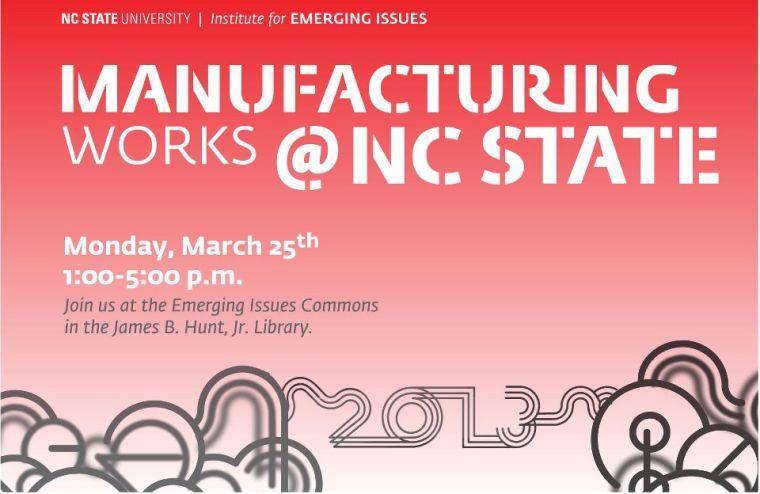The word “manufacturing” does not traditionally bring the arts, design and humanities to mind.
Manufacturing is often characterized by large factories with technologies that incorporate science, technology, engineering and mathematics.
But that may be changing.
Brooks Raiford, CEO of the North Carolina Technology Association and alumnus of the College of Humanities and Social Sciences, said the misconception could be attributed to the idea that outside of STEM, studies are non-technical.
This perception is often untrue in the social sciences, according to Doug Gillan, head of the Department of Psychology.
“Some disciplines within psychology are focused on life sciences, like cognitive neural science and biology,” Gillan said. “Any science that deals with living creatures is going to be interested in behavior and that is where psychology comes in.”
CHASS Dean Jeff Braden said humanities are also relevant in the manufacturing world because they connect cultural implications to the technical aspects of manufacturing.
“All commerce and social interaction takes place in a social and cultural context and those contexts are what we explore in the humanities,” Braden said. “You can’t be successful in the absence of that understanding of the social and cultural contexts.”
Many have revised STEM to STEAMD, adding arts and design because of their importance to the manufacturing sector.
“Engineers are designing things for humans to use. Understanding anthropology, culture, sociology, etc. is pretty critical [for manufacturing],” Gillan said.
The humanities answer the question, “How do we do manufacturing well?” by exploring the possible societal and environmental repercussions, according to Braden.
Design plays a crucial role in manufacturing as well, according to Dean Marvin Malecha of the College of Design.
“We are not just creating new technology, we are producing products that serve and improve people’s lives,” Malecha said.
Malecha wants to rearrange STEM and STEAM and make them more than just an acronym.
“I want to stop talking about ‘STEM’ and ‘STEAM’ and start talking about ‘TEAMS.’ We all need each other to produce great products. We can’t do it alone,” Malecha said.
Braden said that arts, humanities and design each bring creativity into the manufacturing world.
“Creativity will drive the economy of the future and arts are one way [to] stimulate the economy,” Braden said.
“Design inquiry is the creative portion of manufacturing. Designers make products that you don’t know you can’t live without. They have the ability to see what does not yet exist,” Malecha said.
The humanities, arts and design already have established a role in manufacturing, although some people may not realize it, according to Raiford.
“It exists and happens in real life. It doesn’t matter where you’re working. Military, law firm, bank or retail, there is always going to be a hierarchy of leadership,” Raiford said. “You can’t be a leader just by having the technical skills to do the job, you also have to have the ability to lead and inspire others. The humanities teach us those skills.”
Gillan acknowledged the importance of liberal arts skills and said he used them in manufacturing with Loki Engineering and Science. He said daily communication, conferences and writing were all crucial skills in the workplace.
Gillan said he also worked with General Foods in taste perception to identify the psychological underpinnings and discover how and why people react to certain tastes.
A background in the liberal arts also provides career and leadership opportunities, according to Raiford.
“Just look at the governor and CEOs of top companies,” Raiford said.
Governor Pat McCrory has a political science degree. Sam Palmisano, CEO and former-president of IBM, and Dan Hesse, CEO for Sprint, both have liberal arts degrees. Raiford said there is a correlation.
The idea of STEAMD serves as a personification of the idea of interdisciplinary collaboration as well.
“It’s a big mistake to view [the humanities and sciences] as being in conflict and it’s important that there’s a blend,” said Raiford.
This is where STEAMD comes in.
“Just in the field of psychology, we are working with people in engineering, computer science, management, agriculture and food science,” Gillan said. “We can’t do our jobs without making contact with people in other disciplines.”








